Rumba Was Born and Grows in Cuba
especiales
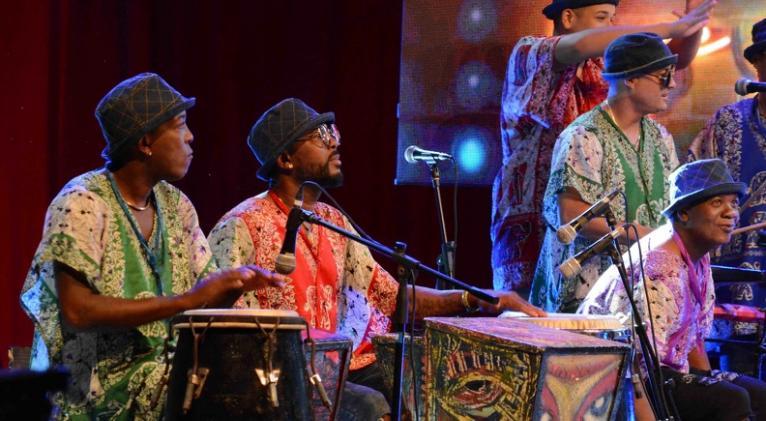
Rumba is part of Cuban heritage, on the same level as tobacco, rum, and salsa, despite the fact that some place it at a lower level due to its supposedly lower-class origins.
That contagious rhythm that, with the passage of one, two, and three, The coolest step that traveled around the world emerged in the port areas of Matanzas and Havana, where slaves brought from Africa first settled.
According to Cuban musicologist Argeliers León, rumba is a party that includes secular, fun, and entertaining music, because its initial beats brightened the lives of those who had exhausted themselves through long, grueling workdays.
The so-called "brava" (rumba dance), derived from fertility and war rites of African origin, kept its essence to this day, although it went through stages of pain due to slavery and uprooting until it evolved into the current one, with a predominance of euphoria and joy.
Its current name could have been derived from tumba, macumba, tambo, or other words associated with the Black festival.
At first, transferring the rhythms from the continent of origin required the use of improvised instruments such as wooden boxes, the sides of a display case, a drawer, a table, or a wooden seat. Later, candle or codfish crates were used, while for the repique, the performers had to provide themselves with spoons, pans, coal-stoking tongs, bottles, all kinds of sticks, and rattles.
During a period of greater refinement, fifth drums were incorporated, made from barrels, staves, and leather stretched through fire until the keys for tuning them appeared. The latter constitutes a clear contribution from the Cubans.

In both Havana and Matanzas, rumba choirs appeared in the late 19th and early 20th centuries to perform and interpret on special dates. Each of these groups challenged each other and represented neighborhoods.
This performance is carried out according to a protocol. The lead singer raises his voice, alluding, if desired, to what will predominate in the piece, and then the choir enters, alternating with the soloist. The latter has the ability to improvise and introduce other texts that receive choral accompaniment.
Rumba includes the yambú, columbia, and guaguancó variants. The yambú is one of the oldest forms, attested in chronicles from the late 19th century. Its singing is simpler than that of the guaguancó, and its playing marks a more measured rhythm, as does the dancing (in loose couples).
There are moments when the female figure shines through virtuoso performances and gestures that are equal to those of the male, although in some passages it’s often overlapped by gestures or motions, in which the man puts his arm around the woman, places a scarf around her neck, a hat, or other symbol that can signify possession.
The guaguancó, with a faster rhythm, displays a more complex form in terms of singing and playing, referring to a courtship dynamic between a man and a woman with actions that simulate intercourse, marking the male power relationship, while the female partner guards against these attempts. In any case, women perform tasks such as washing, sweeping, and domestic gestures.
In the case of the columbia, named after the town where it originated, it’s the fastest-paced rumba and similar to the guaguancó. The dance is designed only for men, who stage a dispute between the bailador (or male dancer) and the quinto (the drummer of the instrumental ensemble that sets the rhythm), in which the latter maintains a rhythmic sequence and the performer imitates it with movements, or vice versa. This dance marks a masculine hegemony and a supposed struggle between equals (dancer-male, drummer-male) for supremacy.
A higher stage of the Columbia dance is the Jiribilla, with more intense, acrobatic, and violent movements and exclusively male participation. The dancers display their skills with knives, machetes, bottles, and fire, among other elements, in a struggle for power, with the most skilled winning the leadership position.
According to scholars, the rumba encompasses behavior, spirit, and lifestyle.
According to specialist Olavo Alén, a rumbero behaves differently than a danzonero who frequents dance halls. Rumberos, due to their humbler origins, project themselves in a more aggressive manner and, in most cases, come from the Santería tradition.
The rumba de solar reproduced what was done on the plantations and in the palenques (republics of runaway slaves, that is, where escaped slaves settled). In those places, a new set of values was created, related to religion, music, dance, magic, cooking, medicine, and sexual life.
It never goes out of style because, with its drumming, it constitutes a fun, secular, and resilient celebration that sings to the memories of a people defending their identity.
To maintain its cultivation and extend it to other latitudes, cultural authorities have been organizing the Sabbath for several years. Rumba fans and their attendees receive explanations about this ancient manifestation, which always culminates with renowned performers whose rhythms leave visitors bouncing along the streets until exhaustion.
There are also festivals such as Timbalaye, an international event with broad popular participation, created in 2007 to promote and keep alive Cuba's native musical expression, folklore, and traditional culture.
In 2015, La Ruta de la Rumba was born, with a two-week itinerary of cultural activities across the country, part of a schedule of recreational initiatives. It includes dance classes, book presentations, concerts, live shows, visits to museums and characteristic sites, seminars, and theoretical meetings, engaging all generations with a particular focus on the synergy between the various arts and Rumba.
WOMEN IN RUMBA
One of the milestones of this indigenous national dance movement was the creation of Team Cuba de la Rumba, which elevated the genre within the country's musical universe.
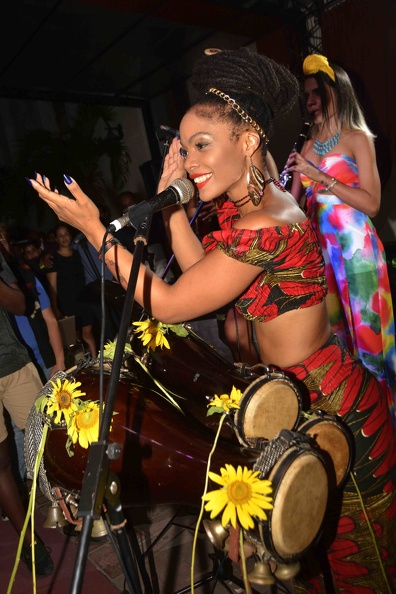
The 15-track album, "Team Cuba de la Rumba presents Women in Rumba," showcases the variety of trends and styles, including its three main variants and the participation of various musical groups such as Yuliet Abreu of Los Papines and Ana Pérez of Los Muñequitos de Matanzas, as well as other singers from groups such as Rumba Morena and Rumbatá from Camagüey, and as special guests, Omara Portuondo, Vania Borges, María Victoria Rodríguez, and Ivette Cepeda, joined by musicians from the groups Anacaona and Obini Batá.
Matanzas native Akemis Terán Carreras was one of the featured artists on the CD: "...I had the opportunity to participate in other albums...but I think this initiative is fabulous, because with it we proved that women can make participate into this genre, which has generally been reserved for men. We play, dance, and sing."
Regarding the aspirations of Team Cuba de la Rumba, Guillermo Amores, project manager, commented that Mujeres en la Rumba showed the capacity of Cuban women to face the challenges that life and men impose.
"That they can venture into any field of music, science, justice, and any place from which to defend national identity..."
Translated by Amilkal Labañino / CubaSí Translation Staff



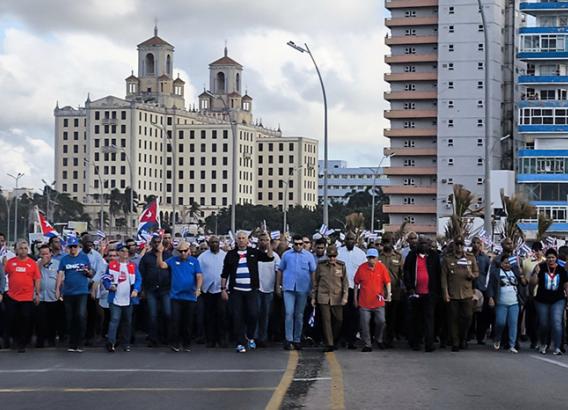
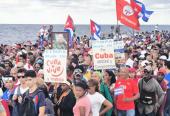

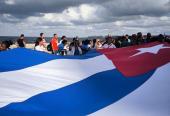
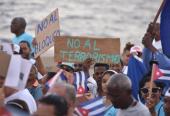
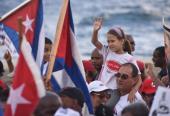



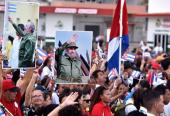

Add new comment